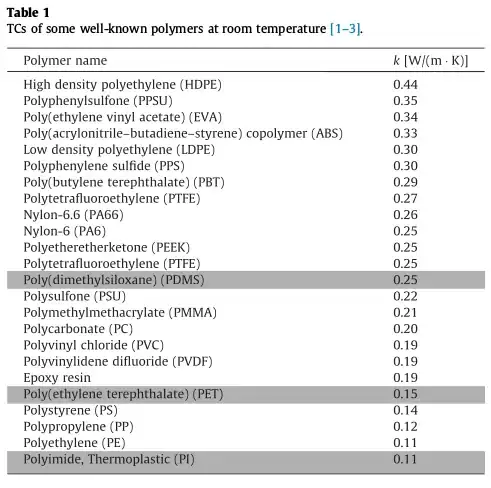Thermal conductivity is how well a plastic conducts heat. Most plastics don't conduct heat very well at all, which is what allows them to be 3D printed. That being said, there are a lot of potential use cases for highly thermally conductive filament, assuming you could print them. A commonly discussed one is computer heatsinks. Similar heatsinks could also be used for stepper motors and extruders in 3d printing.
To get a good picture which plastics are useful in such an application (like mentioned in question: "Water-cooling stepper motor with aluminum block"), I need to know what is the thermal conductivity of the commonly used thermoplastics.

